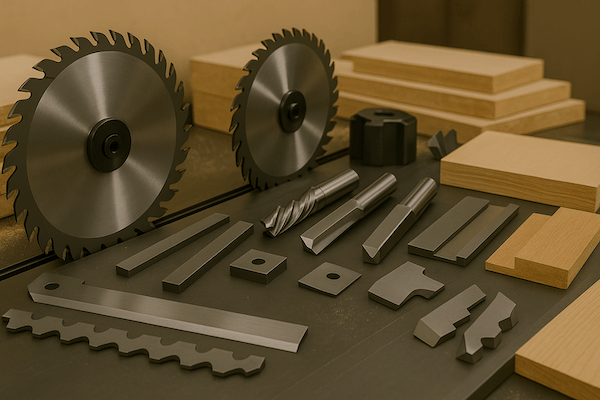
Tungsten Carbide Tools in the Woodworking Industry
Tungsten carbide tools (also known as cemented carbide tools) play a critical role in the woodworking industry, enabling high-speed machining, excellent wear resistance, and long tool life in both manual and CNC operations. These tools are essential for shaping, cutting, surfacing, and profiling a wide range of wood materials such as hardwood, softwood, MDF, plywood, and laminates.
The Main Types of Carbide Tools for Woodworking Industry
Tungsten carbide tools are essential for cutting, shaping, and slitting wood and paper materials.
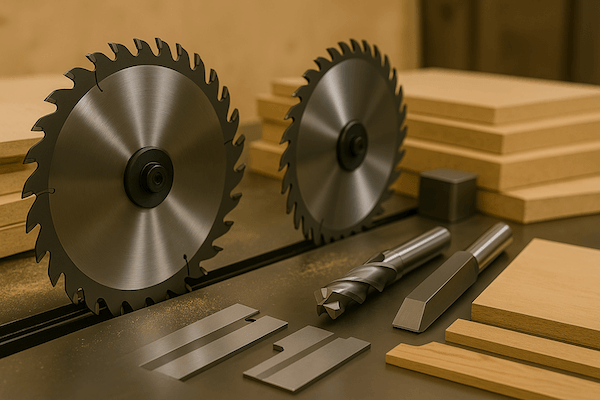
Tungsten Carbide Tipped Saw Blades
High-efficiency circular blade for cutting MDF, plywood, and hardwood panels.
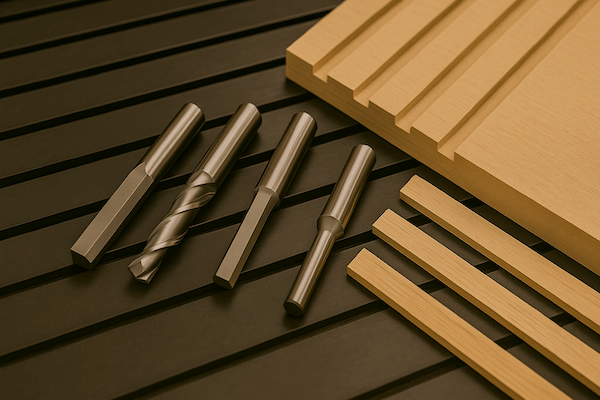
Solid Carbide Router Bits
Precision bit for shaping edges and carving grooves in wood and laminate.
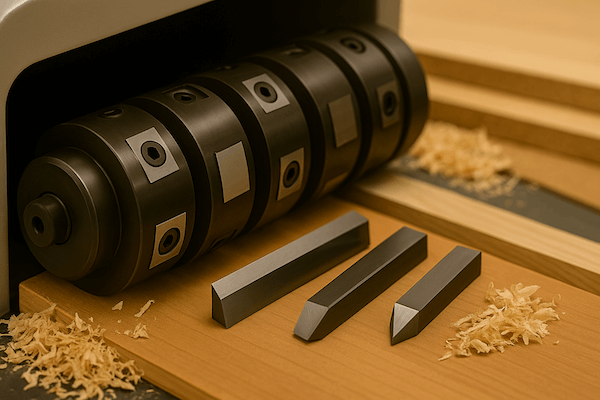
Carbide Planer Knives
Durable straight knife for thicknessing and smoothing wood surfaces.
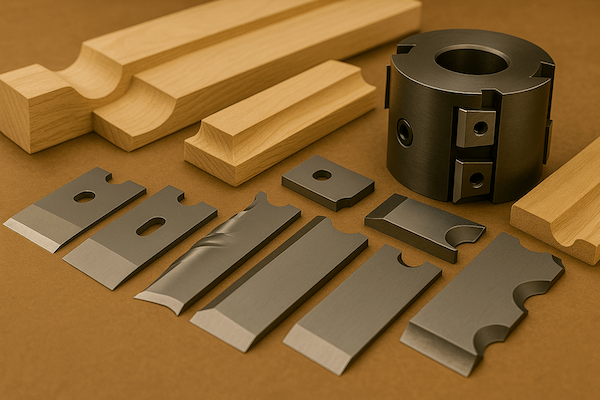
Carbide Moulder Knives
Profile knife used for trimming and forming decorative wooden mouldings.
Quick and easy: Enter your specifications and get a quote in one business day
Applications of Tungsten Carbide Tools in Woodworking Industry
Retop Carbide’ specialty woodworking tooling is trusted and used by the manufacturing leaders in the industry.
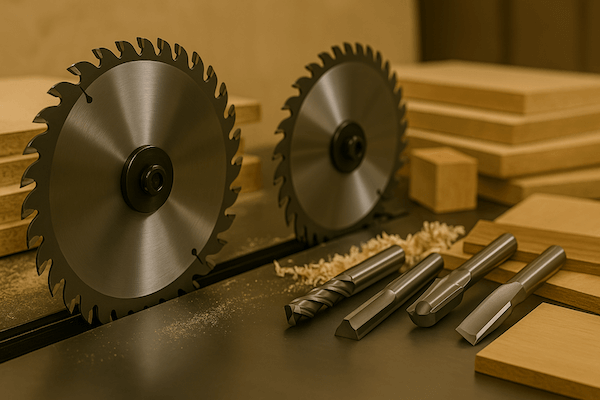
Cutting Blades
| Product Name | Tool Category | Application Area |
|---|---|---|
| Tungsten Carbide Tipped Saw Blades | Circular Cutting Tools | Cutting solid wood, MDF, HDF, particleboard |
| Carbide Panel Saw Blades | Precision Wood Cutting | Horizontal and vertical panel saws |
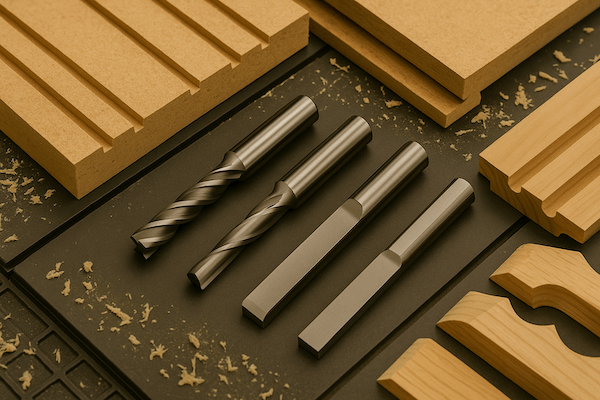
Routing Tools
| Product Name | Tool Category | Application Area |
|---|---|---|
| Solid Carbide Router Bits | CNC & Handheld Milling | Grooving, edge trimming, 3D profiling |
| Carbide Flush Trim Bits | Finishing Router Tools | Trimming laminated board edges |
| Spiral Carbide Router Bits | High-Speed Cutting Tools | Nesting and contour milling in cabinetry |
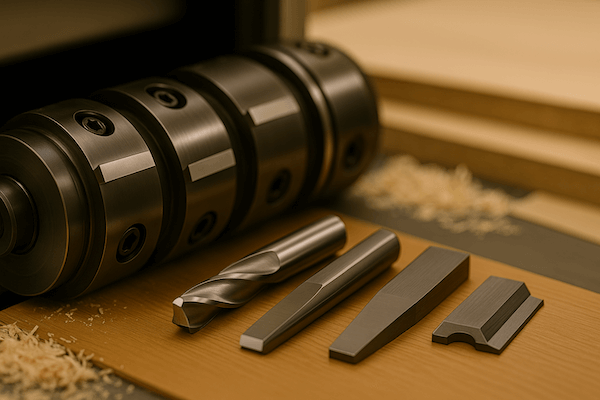
Planing & Surfacing Tools
| Product Name | Tool Category | Application Area |
|---|---|---|
| Carbide Planer Knives | Straight Knife Inserts | Installed on thickness planers and jointers |
| Solid Carbide Insert Knives | Spiral Cutter Inserts | Helical cutterheads for consistent surfacing |
| Tersa Carbide Knives | Quick-Change Blade System | Tersa-compatible cutter blocks for surface planing |
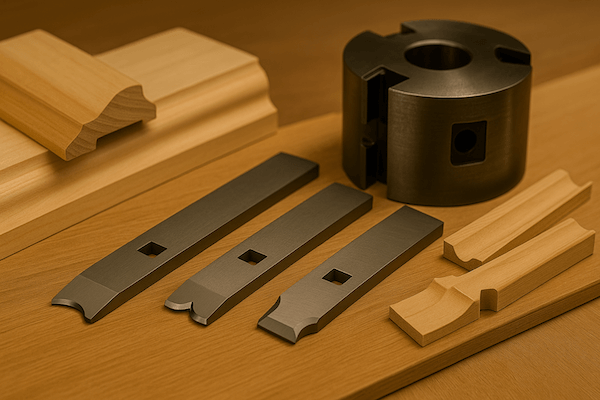
Moulding & Profiling Tools
| Product Name | Tool Category | Application Area |
|---|---|---|
| Carbide Moulder Knives | Profile Cutting Tools | Installed on spindle moulders or shapers |
| Carbide Profile Inserts | Replaceable Cutterheads | Decorative profiling on furniture and trim pieces |
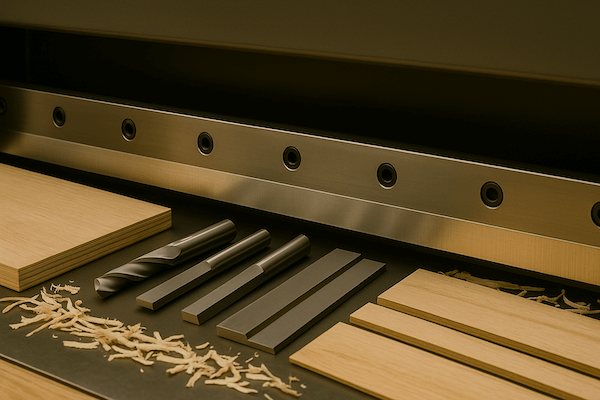
Veneer & Plywood Cutting Tools
| Product Name | Tool Category | Application Area |
|---|---|---|
| Carbide Veneer Knives | Guillotine Shear Blades | Precision cutting of thin veneer sheets |
| Carbide Clipping Blades | Plywood Edge Trimmers | Trimming plywood edges during lamination |
Conclusion
With their exceptional hardness and heat resistance, tungsten carbide tools are indispensable in modern woodworking. From sawmills to furniture production, these tools reduce downtime, enhance finish quality, and increase throughput—making them the smart investment for professionals and manufacturers seeking performance and consistency.
Quick and easy: Enter your specifications and get a quote in one business day
